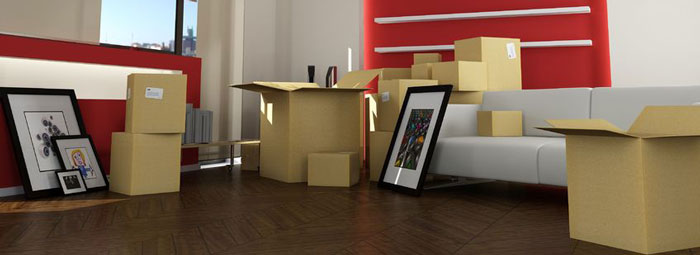
Moving house takes a whole lot of planning and organisation because you don’t just move house. Unless you are moving 10 minutes down the road, a house move normally involves changing schools, doctor, dentist, vet and a whole host of other things so there’s alot to think about before, during and after any move.
Once you’ve worked out all the essential people and organisations you need to deal with (and we’ve got some handy checklists for that), you then have to think about the best time to start packing your moving boxes. If you are going to pack efficiently and avoid damage it will take planning and time. Trying to pack all your moving boxes just a few days before the removal vans are due will only result in rushed packing, and probably, damage. So, what do you need to do to plan and pack effectively? First of all, and most importantly you need to decide the type of removal service you are going to use. This will have a major impact on the time needed to pack and the materials you’ll need. If you decide to use a removal company you may well have the option for them to provide a packing service for you. It’ll still take some planning as you’ll need to give them some direction over packing, but someone else will be doing it for you which frees up your time.
Alternatively you may decide to use a removals company but do your own packing or you may even be doing it all yourself; packing, loading and driving.
Whichever option is for you one thing is certain – packing your moving boxes properly is essential if you are to avoid items being damaged when they arrive at the other end of their journey. If the removals company are doing your packing, you could argue that they’ll have to pay if there are breakages so you don’t need to worry (you’ll need to be sure of their insurance cover and your home insurance cover). But do you really want the added stress of having to claim for those breakages, and what if it’s your favourite vase or crockery that can’t be replaced?
To avoid rushed last minute packing, think about what can be packed in advance. Start clearing wardrobes, shelves and cupboards of items that you don’t use regularly and pack a bit at a time in the weeks leading up to your move. In addition, think about the things you can’t pack yet, but will need to be kept separately and travel with you on moving day. Things like medications, the kettle, tea cups, tea, coffee, school uniform, pet essentials and important papers and numbers.
Now you’ve worked out where to start, here are our tips for packing your moving boxes
1. Use the right boxes and containers
This may sound obvious but many people re-use old boxes thinking they’ll be fine. Make sure you have good, clean, dry, sturdy boxes. If you’ve been storing boxes in the loft or garage the chances are they’ll break under pressure. Use boxes that have lids or that the tops can be taped shut. Removals or storage firms can supply good quality boxes but if you are going to get some from the local supermarket, make sure they are up to the job. Consistently sized boxes are easier to stack when packing your removal van.
2. Wrap fragile items well
It goes without saying to wrap glassware, china and anything breakable carefully using bubble wrap or tissue paper but make sure you use enough – often people don’t which results in chips. Also if using newspaper think carefully about the items you are wrapping as newspaper print can smudge and leave marks on some delicate items.
3. Clearly mark boxes
Make sure you mark boxes of fragile items ‘Fragile’ and also ‘This Way Up’ to avoid any mishandling. Marking the boxes with the room they are destined for at the other end also helps when it comes to unpacking later.
4. Don’t over-pack boxes
Filling boxes with too much will result in problems. It will either be too heavy for you to lift safely or could break or burst. So no emptying a whole bookcase and putting them all into one box!
5. Don’t under-pack boxes
Having half empty boxes could result in other items causing their collapse. If you have boxes that are not full, top them up with packing materials or suitable items to make sure the box remains rigid; Cushions and pillows make great fillers.
6. Distribute weight evenly
You may need to mix the contents of some of your boxes to ensure they can be carried safely. Put the heavy items evenly across the bottom half of the box and the lighter items at the top to avoid the weight shifting.
7. Use plenty of tape
Secure your boxes top and bottom using good quality tape. Tape right across the seams and use multiple strips to ensure the boxes don’t burst open while being moved.
Using these tips should ensure that your goods get from A to B without damage and if you need to store pre packed boxes away from the home to make room for further sorting and packing, they’ll be ready to slot straight into a small storage unit.
If you have a need for self storage in between moves we have self storage facilities in Gloucester Bristol and Stroud.
Image Copyright: Franck Boston